Hot Stamping a Hot Topic
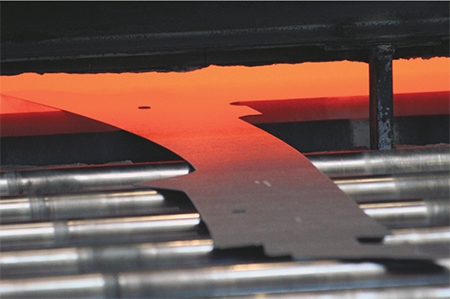
|
| Hot stamping has undergone generational technology changes that now enable it to serve as a viable process for production of front and rear crash-zone parts, well past its early automotive applications for impact beams and pillars. Key is the ability to create ever more specific soft zones in the parts. |
Hot stamping has caught the eye of automotive OEMS and suppliers, and MetalForming has taken notice. Thanks to decades of R&D, hot stamping has undergone generational technology changes that now enable it to serve as a viable process for production of front and rear crash-zone parts, well past its early automotive applications for impact beams and pillars. That’s the gist of an April 2017 article, Hot Stamping: Local Soft Zones Via Laser. Key is the ability to create ever more specific soft zones in the parts, according to Paul Belanger, director of Gestamp R&D North America.
“Migration of high-strength steels into the crash zones is probably due to control of soft zones,” Belanger said, “and the ability to design for them and know the kinematics of the parts during the crash event. This knowledge allows for significant weight savings.”
Via this process, ultra-hard steel is formed into complex shapes, resulting in lightweight yet strong parts that, otherwise, typically would require thicker, heavier cold-stamped parts welded together. By using improved validation measures such as advanced forming and crash simulation data and software, Honda and Gestamp were able to better localize soft zones in the die during hot stamping, resulting in production of rear rails in the 2015 Honda Civic with soft-zone features that enable improved impact-energy absorption in the event of a crash. The development earned Honda and Gestamp the Steel Market Development Institute’s Automotive Excellence Award in 2016.
Fiber Fuels Laser-Cutting Advances
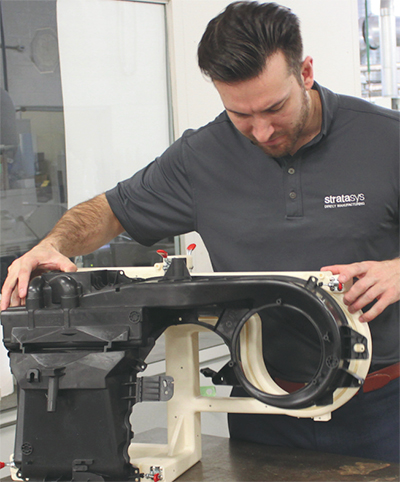
|
| Additive manufacturing can be viewed as an essential tool in many manufacturing operations. Examples of its possible uses include the manufacture of fixtures and tools. |
The past five years also have seen fiber-laser cutting go mainstream, with more metalformers and fabricators recognizing the potential for huge throughput gains. MetalForming trumpeted the technology in a June 2014 article, Energy Savings Convince Management of the Benefits of Fiber Lasers. Justifying the investment of a 2.5-kW fiber laser machine by Reflex Industries, Elkhart, IN, came down to increased speed and decreased energy costs, according to the company’s engineering manager, Chris Heffner. The supplier to the recreational-vehicle, travel-trailer and utility-truck industries had added the machine to its stable of CO2 laser cutters and other fabrication equipment primarily to cut aluminum from 0.10 to 1⁄8 in. thick.
“The 2.5-kW fiber laser can cut aluminum faster than the 4-kW CO2 laser can,” Heffner said, “and consume a mere fraction of the energy.”
On top of that, he spoke at length on the improved edge quality from using the fiber laser to cut aluminum sheet, in particular, compared to CO2.
“Any burrs from the fiber laser are much smaller and easier to remove than the burrs created by CO2-laser cutting,” Heffner said. “That alone has saved significant time and money by eliminating a lot of secondary part handling and deburring.”
With fiber laser machines now available that feature three times the wattage of Reflex’s first, many other manufacturers are realizing significant advantages.
Industry 4.0 Has Arrived
Interfacing with the dizzying array of advanced machinery now at our disposal, and getting it to perform at its highest level, is a task managed by control systems, which have kept pace with equipment-technology improvements.
|
Conferences Connect Technology with Users
Since its first conference—the Manufacturing ERP Experience—held August 23-24, 2011, MetalForming magazine has served as a premier provider of events designed to advance the metalforming and fabricating industries by providing executives, engineers and associates with a range of important learning opportunities on technological advancements in software, processes, equipment, materials and more, and how to effectively apply them. In other words, MetalForming celebrates its role in aiding industry professionals to discover solutions to metalforming and fabricating challenges, while encouraging innovations along the way.
“MetalForming launched the ERP Software Experience, our first live event, to provide a platform where metalforming company executives and their IT leaders could evaluate ERP solutions from several suppliers, efficiently and in one setting,” says Brad Kuvin, publisher/editorial director, reflecting on our foray into conferences. “Several ERP-software companies were given space to conduct demonstrations, and we also invited industry consultants and experts to provide conference presentations on related topics, including tips on ERP software selection and implementation.
“Conferences such as these,” he continues, “provide perfect opportunities for MetalForming magazine to connect suppliers of technology and products with users in the metalforming industry, enabling metalforming companies to continue to have access to the latest-greatest innovative technologies needed to optimize their productivity and quality.”
There’s no letting up in 2019, as MetalForming-associated events include the following:
- Lubrication Technology Conference, February 12-13, Schaumburg, IL
- PMA Auto Parts Supplier Conference, April 29-30, Detroit, MI
- Industry 4.0 Experience for Metalformers and Fabricators, June 24-25, Cleveland, OH
- 3D Metal Printing Experience and Tech Tour, August, Detroit, MI
- Mexico Metalforming Technology Experience, August, Queretaro, Mexico
- Hot Stamping Experience, September, Detroit, MI
- Servo Technology Experience, October, Nashville, TN
|
“In the 1970s and into the ’80s, metalformers wanted a control that would make the press go down and up,” explained Dean Phillips, sales engineer for Link Systems, Nashville, TN, in a March 2015 article, Stamping Controls Evolve to Meet Current, Coming Challenges. “They then sought more—slide adjust, counterbalance and other functions to reduce the amount of time that operators required to perform such tasks.”
Today, one-button operation is the ideal.
“The operator selects a job and the press controls take over,” he said, “telling all of the workcell components what to do.”
And there’s more…much more.
“Today, controls can communicate with robots, transfers and other cell components,” Phillips explained. “In the past, press controls did not address components or particular processes if they were not in and of the press. Controls now have expanded their reach, especially given welding, assembly, clinching and other actions performed within the tooling to produce a more complete part. They can even alter tooling to improve tolerance on the fly.”
And, as thinking evolves from stamping as an assembly-line process to cellular manufacturing, controls will enable the evolution.
“The integration of ancillary devices into a single-button operation so that all systems are communicating—that’s where controls are heading,” Phillips said.
The evolution of controls and communication capability dovetails nicely into another major development over the past few years, the emergence of the Industrial Internet of Things (IIoT). MetalForming has devoted significant coverage to IIoT and Industry 4.0 as well as its impact on MES and ERP systems. Consider this article, Heating Up: The Cyber Age of Automation Controls, in the July 2016 issue.
“We have a computer on every machine and now we have connectivity, which allows us to bring information to the cloud, or cyberspace, and then decide what to do with that information,” explained Mark Heitbrink, electrical engineering manager at Nidec Minster, Minster, OH. “A machine at the local operator level is very smart. We can get information to the cloud so that it can be processed. We then, for example, have the opportunity to perform some predictive analysis on why or when a machine will fail.”
Such connectivity also assists should equipment or lines fail or run sub-optimally. With so much information available, remote monitoring and diagnostics become orders-of-magnitude more efficient—no need to wait for technicians to arrive and perform lengthy troubleshooting procedures.
But even with all of the advantages of big data, there are caveats, Heitbrink warned. Besides the need to accurately process data to arrive at informed, correct decisions, data-gathering itself presents challenges, he said. For example, the ability to tie the equipment to production people so that they can analyze uptime and downtime has advantages, but is limited by the accuracy of inputs.
“Someone may sit at a desk and monitor a machine or a line, and from the information inputs determine why it is or isn’t running efficiently or properly,” Heitbrink noted. “Operators still may be required to enter in that vital information. It’s the old ‘garbage-in, garbage-out’ adage. For a good analysis of what is happening on that line, good information must be entered. It may be that some operators are less efficient, take longer to set up equipment or change tooling and coils, or take longer lunch breaks.”
|
 Engaging the Industry Beyond Print Engaging the Industry Beyond Print
Recognizing that information needs extend well beyond what print can deliver, MetalForming magazine’s social-media efforts include regular Facebook posts and live video as well as Twitter tweets intended to provide readers with news and market-trend updates. And, our MetalForming Everywhere app brings the latest to your mobile device.
We offer newsletters directly to your inbox detailing industry news and events as well as the latest metalforming and fabricating products, and also offer our print publication in digital form, delivered directly to you. Last but not least, all MetalForming content, including our newly developed podcasts, can be found online.
|
As long as humans are part of the equation, they’ll need to be skilled and they’ll need to be trained to take best advantage of this communication and big-data revolution. And, if so, Industry 4.0 offers limitless possibilities for productivity improvement.
“Simply put,” concluded Heitbrink, “these data advancements allow you to optimize what you do.”
AM: A Metalformer’s Friend
The past five years also have brought a new player to the part-making game, additive manufacturing (AM), or 3D printing. In the August 2017 article, Add AM to Your Arsenal, MetalForming explored ways in which AM can become an important tool in a manufacturer’s toolbox.
Can metal parts be taken from the presses, cutting machines and other metalforming equipment and instead be produced via printing? Not in the quantities and cycle times demanded by many customers, certainly not in the foreseeable future. Equipment and material costs, combined with the need for extensive post-processing to meet precision tolerances and yield acceptable surface finishes, all argue against a replacement of traditional stamping and fabricating processes. On the other hand, by shifting perspectives, AM can be viewed as an essential tool in many manufacturing operations. Examples of its possible uses include the manufacture of fixtures and tools.
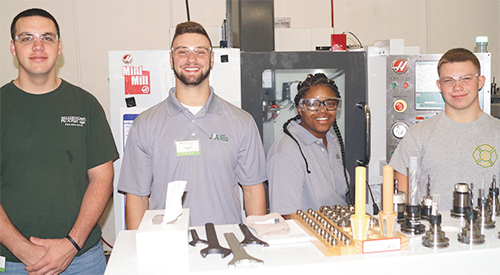
|
| Investment in workforce development, and in educating future industry professionals, can spell success for individual manufacturers and the manufacturing industry as a whole. |
“We see a wide variety of fixturing and tooling applications in manufacturing environments,” Alissa Wild, manufacturing aids and tooling lead for Stratasys, a maker of 3D-printing materials and equipment, and a provider of printing services, told us. “Across industries and across facilities we see many departments—assembly, fabrication, health and safety, quality, packaging and logistics—using AM to create all different forms of nonmetallic fixturing, workholding tooling and final-use assembly tooling as well as actual metalforming tooling.”
AM also can help produce what Wild called “hybrid fixtures,” which include, for example, hard contact points for a drill guide.
“The fixture shape will be the same, but metal inserts are placed into the fixture component to address durability and wear concerns,” she says.
As the article reveals, metalformers may be surprised by how much AM can help…and in unexpected ways. For example, at a recent aerospace conference, a speaker from a major defense contractor relayed how his company began using AM to produce jigs and fixtures to test large aircraft parts. The company had bought a new resin 3D-printing system with a huge build envelope such as one used to print automobiles. The machine was installed in an otherwise empty room and the engineers got right to work deciding what to make. One of them noticed that everyone was standing, as the room had no furniture. The first product they designed and built? A chair.
It All Relies on People Power
For all of the talk of automation and IoT, ultimate success boils down to a trained, inspired workforce. Machines and technologies only perform as well as those who set up, operate, maintain and manage them. Progressive businesses recognize this, and so does MetalForming. In our March 2018 presentation on workforce development, we profiled leading manufacturers who take workforce development to heart. One, Oberg Industries, Freeport, PA, is an apprenticeship pioneer and maintains apprenticeship programs that span its processes. It also taps the experience of recently retired associates to help mentor newer hires, offers extensive, incentive-laden training options, and works closely with various entities to promote manufacturing as a career.
“We want to position ourselves to grow in the 5- to 6-percent range, and finding people through workforce development is a major part of that goal,” Dave Rugaber, Oberg executive vice president, told MetalForming. “The goal in everything we do, including process excellence and employee growth, is to drive success for our customers.”
Hence Oberg’s motto: “Customers rely on us and we rely on our people.”
“Employee development is overlooked by so many companies in our industry,” said Greg Chambers, Oberg director of corporate compliance, stressing that employees can’t be expected to grow and succeed without resources or skills development.
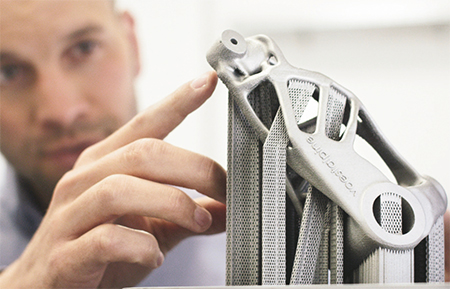 To that end, the company has invested heavily in mentor training. Those completing the course receive NIMS certification for on-the-job training and are compensated for their efforts. Also, via the National Network, Oberg has instituted a Common Employability Skills curriculum featuring weekly one-hour sessions taught by employees and taking into account nontechnical skills such as communication and critical thinking.
To that end, the company has invested heavily in mentor training. Those completing the course receive NIMS certification for on-the-job training and are compensated for their efforts. Also, via the National Network, Oberg has instituted a Common Employability Skills curriculum featuring weekly one-hour sessions taught by employees and taking into account nontechnical skills such as communication and critical thinking.
Recognizing and rewarding significant achievement and effort put forth by employees, training at Oberg also includes college recognition for those qualified, allowing them to receive a certificate and walk with other college graduates on graduation day.
The positive effect of workforce development cannot be overstated, just ask Oberg Industries. Also not to be overstated is the level of diversity now found in manufacturing operations, from the shop floor to the top floor. Recognizing this, in 2016, MetalForming introduced its Women of Excellence in Metalforming and Fabricating awards program. The annual award honors women in leadership positions or on the shop floor, those who represent dedication to their company and the industry, and demonstrate excellence in meeting their workplace responsibilities. The November 2016 issue of MetalForming recognized 30 industry professionals as winners that year, with 19 more earning honorable mention.
“We are impressed and inspired by the women celebrated in this section,” Allison Grealis, president of Women in Manufacturing and vice president of Association Services for the Precision Metalforming Association, told us. “We hope that their stories and examples of success will encourage greater numbers of women to enter the industry and pursue challenging positions in metalforming.”
Look for coverage of the 2018 Women of Excellence in Metalforming and Fabricating award winners in MetalForming’s December issue.
2019 and Beyond Five-Year Plans: Automation, Robotics and Networking Take Center Stage
Executives from seven metalforming companies recently shared their thoughts with MetalForming on what it will take to remain competitive during the next five years. Offering their insights:
- William Adler, president and CEO, Stripmatic Products, Inc., Cleveland, OH
- David Arndt, president, Pentaflex, Inc., Springfield, OH
- Kevin Clay, vice president of sales and business development, Pridgeon & Clay, Inc., Grand Rapids, MI
- Colin Cosgrove, president, Laystrom Manufacturing Co., Chicago, IL
- Jody Fledderman, president/CEO, Batesville Tool & Die, Inc., Batesville, IN
- Joshua Hopp, president, HK Metalcraft Manufacturing Corp., Lodi, NJ
- Patrick Steininger, president, Sko-Die, Inc., Morton Grove, IL
MetalForming: During the next five years, what steps must metalforming companies take to ensure continuous evolution and innovation?
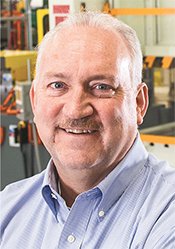
|
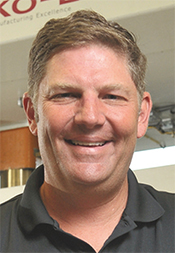
|
| William Adler, president/CEO, Stripmatic Products, Inc. |
Patrick Steininger, president, Sko-Die, Inc. |
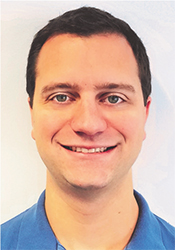
|
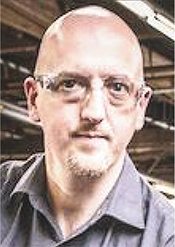
|
| Joshua Hopp, president, HK Metalcraft Manufacturing Co. |
Colin Cosgrove, president, Laystrom Manufacturing Co. |
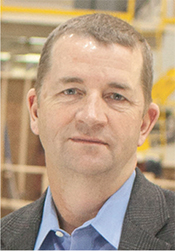
|
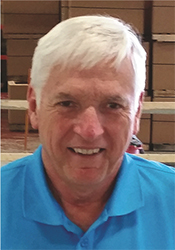
|
| Jody Fledderman, president/CEO, Batesville Tool & Die, Inc. |
David Arndt, president, Pentaflex, Inc. |
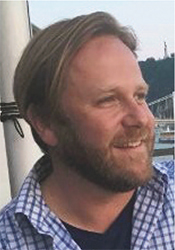
|
|
Kevin Clay, vice president of sales and business development, Pridgeon & Clay, Inc.
|
|
Adler: In order to remain forward-thinking, we emphasize networking and plant tours. I bring managers from other plants through our shop—ours is a very open shop—and I show them our equipment and processes, and then I ask where we can improve. Then, when I’m invited on a plant tour, I do the same. That’s how you get better. The fact that we embrace laser welding is a direct result of such networking efforts.
Steininger: Agreed. Being open to change, all the time, is important. We work with local noncompeting manufacturing businesses to learn what’s going on at all of our facilities. We have different groups representing operations, sales and management. Companies provide representatives of those job functions and those groups visit one another, providing objective criticism and suggestions, with everyone benefiting from the shared expertise.
Hopp: It’s about pursuing intelligent benchmarking with like-sized, like-minded companies. What you gain could be as simple as a template for quality metrics or displaying employee photos with their start dates on the shop floor. From others, you can learn how many toolmakers they have per press operator, or who should be in charge of production planning. After a networking meeting I changed the responsibilities of who controls our production planning and who controls the dispatch list, and our new system runs much smoother.
Cosgrove: Finding ways to share the company’s vision throughout the organization is important. We’re good at pulling back the curtain and sharing agendas, strategic initiatives and what’s going on in the company. People are hungry for opportunities to contribute, if they feel part of the vision. When they do, that fuels innovation and evolution.
Fledderman: Today’s technology provides opportunities for us to evolve, but we must stay on top of it because technology is moving more quickly than ever. In the 1980s, we gained innovations such as link-motion presses, wire EDM and CAD/CAM. If you didn’t get on board quickly with those technologies, you lost business. The same is happening today with servo presses, 3D printers and IIoT. One way to stay on top is to find the brightest talent. That may mean broadening your search beyond the local labor pool, and in some cases, looking abroad.
MetalForming: In which technology areas must your company show improvement and what are you doing about it?
Arndt: With fewer workers available, automation, definitely, is an area where we’re looking to improve. We’re currently using two servo presses and striving to stay competitive with the latest technologies, including upgraded transfer systems and control systems on our presses. Also, we have an automated assembly cell with material-handling and welding robots. These additions allow for the work to be performed with one, rather than three, employees per shift.
Fledderman: Automation is one of those weird terms that makes most everyone automatically think of the same thing: robotics. Yet, there are many other ways to automate. Think down the line and identify opportunities for task-specific equipment such as pick-and-place units.
Cosgrove: Perhaps the most intriguing new technology is collaborative robotics, which can be readily deployed to different work centers and areas, especially when variety and turnover of parts is high. We recently had a rental unit in our facility for several months. Right now, we’re treading water, but next year we expect to have the right application for collaborative robots.
Clay: We’re working with a couple of collaborative robots, and this will receive a lot more focus in the next few years. We’re also transitioning to laser welding and expanding our validation-testing capabilities. We’ve always invested heavily in research and development, and we’ll continue to do so as opportunities present themselves.
Adler: We will continue embracing automation, both in terms of product capability and quality inspection, with one of our goals being to achieve 100-percent automatic inspection of parts, where, using vision systems, cameras and lasers, we’re able to inspect every key feature of the parts we produce. It’s a matter of integrating existing inspection technology so that parts are handled automatically and presented to the inspection equipment, quickly and accurately. Our goal is to be there within the next five years.
MetalForming: What are your company’s greatest nontechnology challenges, and what are you doing about them?
Adler: Ongoing challenges include improving uptime via predictive maintenance and in-depth troubleshooting protocol, and finding the time to cross-train our very busy employees.
Clay: Attracting the right people is a great challenge. Four-year colleges aren’t producing the employees we need, namely skilled tradespeople. It’s important for companies to aggressively offer training and tuition assistance to committed employees, while reaching out to local school districts to make administrators aware of employment opportunities. This takes involvement. For example, we’re involved with assisting local students with their robotic teams. Finding bright young people and getting them interested in manufacturing must be a priority industrywide.
Cosgrove: Chicago’s Manufacturing Renaissance Group, for which I served as a committee co-chair, is driving manufacturing in three area high schools, where they connect students with local companies. Currently, 180 high-school students receive technical training as part of a feeder system for manufacturers. I started my career on the shop floor as a press-brake operator and worked my way up. Students need to know that there are good career opportunities in manufacturing.
Hopp: Just finding reliable workers can be a challenge. When we have employees who want to work and learn, we invest heavily in them with formal and on-the-job training. For example, one of our toolmakers demonstrated that he wanted to expand his knowledge and have more influence on the success of our company. This tenacity was appreciated and he now is our pressroom manager. Next year we’re enrolling him in the PMA Management Development Academy (www.pma.org/mda). Another young man, hired to cut tubes as a temporary employee, would find his manager after completing a task and ask, “What can I do now?” After a series of promotions over two years, he is our secondary process lead man.
Arndt: Programs such as PMA’s METALFORM EDU (www.pma.org/metalformedu) help us to gain training for our new employees, freeing up my engineering resources, supervisors and floor leads from spending large amounts of time mentoring.
Steininger: Effective mentoring may not always be job-related. We’re addressing people not showing up for work through an outside pilot program that provides financial coaching. If an employee’s financial house is in order, and he or she has a manageable budget, insurance, etc., then there’s a greater chance that we’ll have a more productive and focused worker, rather than one worried about paying for braces or a car.
MetalForming Also Primed for the Future
As metalformers and fabricators prepare to face coming challenges, expect MetalForming to continue reporting on these challenges and presenting solutions.
“We recognize that metalformers today perform a wide range of tasks to turn sheetmetal into finished products, including stamping, cutting, bending and welding,” explains MetalForming publisher/editorial director Brad Kuvin. “To succeed, they need consistent, accurate information on these technologies, and others, and on best practices for implementing them. And, they also must stay current with information technology such as ERP and MIS software, and on automation solutions. All of these have become critical areas of focus for MetalForming magazine as our editorial mission has evolved over the years.
“Looking forward,” he continues, “we’ll strive to stay ahead of the curve in covering technology areas such as automation, robotics, additive manufacturing and Industry 4.0/IIOT, ensuring we continue to be the leading provider of information that helps our readers do their jobs better, each and every day.” MF
Industry-Related Terms: Bending,
Case,
Center,
Die,
Edge,
Fixture,
Form,
Forming,
Laser Welding,
LASER,
Lines,
Point,
Run,
Surface,
Tolerance,
TransferView Glossary of Metalforming Terms Technologies: Stamping Presses, Materials, Cutting
 Lou Kren
Lou Kren Joe Jancsurak
Joe Jancsurak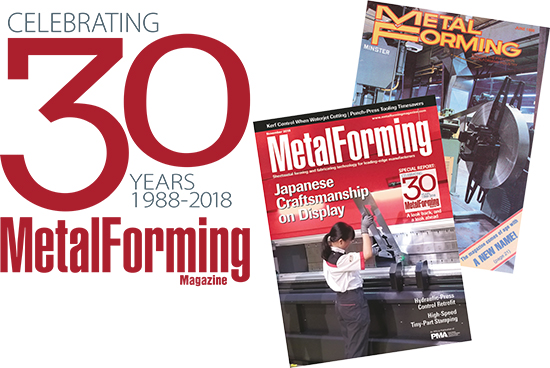 For 30 years, MetalForming magazine (known as Metal Stamping before that) has sought to inform the metalforming and fabricating communities on technology advancements and how they can be best applied to ensure productivity, quality, safety and profitability. We’ve profiled innovative, forward-thinking companies and individuals, and have strived to keep the industry apprised of relevant news and issues. MetalForming has embraced webinars, conferences and various social-media platforms to better communicate with our readership. And, all the while, we have looked ahead for clues as to what information will help our industry, and how we can best deliver it.
For 30 years, MetalForming magazine (known as Metal Stamping before that) has sought to inform the metalforming and fabricating communities on technology advancements and how they can be best applied to ensure productivity, quality, safety and profitability. We’ve profiled innovative, forward-thinking companies and individuals, and have strived to keep the industry apprised of relevant news and issues. MetalForming has embraced webinars, conferences and various social-media platforms to better communicate with our readership. And, all the while, we have looked ahead for clues as to what information will help our industry, and how we can best deliver it. 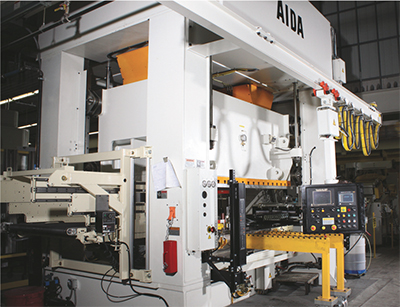
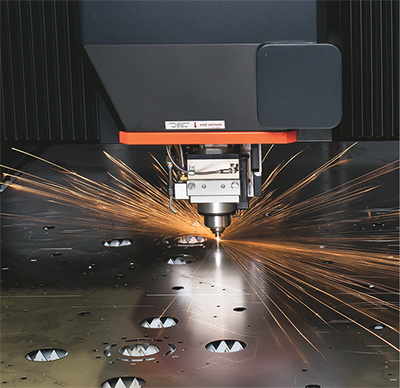








 Engaging the Industry Beyond Print
Engaging the Industry Beyond Print









 Event
Event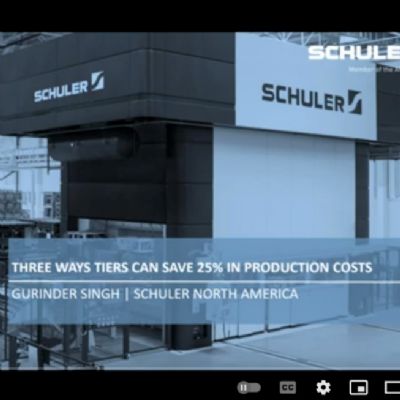
 Webinar
Webinar